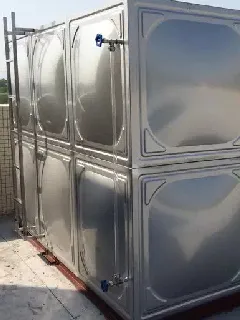loading...
- No. 9, Xingyuan South Street, Dongwaihuan Road, Zaoqiang County, Hengshui, Hebei, China
- admin@zjcomposites.com
- +86 15097380338
- Welcome to visit our website!
Exploring the Cost Factors and Market Trends of GFRP Reinforcement Bars for Construction Projects
Understanding GFRP Bars Prices and Market Trends
Introduction
Glass Fiber Reinforced Polymer (GFRP) bars are emerging as a revolutionary alternative to traditional steel reinforcement in construction and civil engineering applications. Their lightweight, corrosion-resistant, and high-strength properties make GFRP bars an ideal choice for various structural elements, particularly in environments prone to moisture, chemicals, and high salinity. However, understanding the pricing dynamics of GFRP bars is essential for contractors, builders, and engineers when considering budget constraints and long-term value.
Factors Influencing GFRP Bar Prices
1. Material Composition GFRP bars are made from a combination of glass fibers and a polymer matrix. The type of glass fiber used (such as E-glass or S-glass) significantly affects the cost. Higher quality fibers may lead to increased prices but also offer superior strength and flexibility.
2. Manufacturing Process The production method of GFRP bars can vary, which impacts pricing. Advanced manufacturing techniques such as pultrusion and filament winding ensure high-quality composite materials but may also entail higher labor and operational costs. As technology evolves, more efficient manufacturing processes could lead to a reduction in prices over time.
3. Market Demand The construction industry has seen a gradual shift towards sustainable and durable materials. As more projects seek to utilize GFRP for its advantageous properties, demand continues to rise, which can drive up prices. Conversely, if supply outstrips demand, prices may stabilize or even decrease.
gfrp bars price

4. Geographical Location The cost of GFRP bars can differ significantly based on geographical location. Transportation costs, local regulations, and availability of materials in different regions can all influence final pricing. For instance, areas with a high incidence of infrastructure projects may achieve lower prices due to bulk purchasing.
5. Government Regulations and Incentives In some regions, government initiatives aimed at encouraging the use of sustainable materials can affect GFRP pricing. Subsidies or tax incentives for using environmentally friendly materials might reduce overall costs for consumers, making GFRP bars more appealing.
Current Market Trends
As of 2023, the GFRP market has witnessed substantial growth, largely due to the increasing need for durable construction solutions. The global GFRP market is expected to continue expanding, driven by urbanization, infrastructure development, and a growing emphasis on sustainability. With advancements in technology and production methods, manufacturers are working toward reducing costs while maintaining quality, which could make GFRP bars more accessible to a wider range of projects.
However, it is crucial for buyers to conduct thorough research to understand the price variations among suppliers. The market is populated with a mix of manufacturers, each offering different price points based on quality and service. Comparing prices and examining the credentials of suppliers are vital steps in ensuring that the best value is obtained.
Conclusion
In conclusion, while GFRP bars present a promising alternative to traditional steel reinforcement, their pricing is influenced by a myriad of factors including material composition, manufacturing processes, and market demand. As the construction industry continues to evolve towards sustainable practices, the demand for GFRP bars is likely to grow, along with their price. Staying informed about market trends and conducting diligent supplier evaluations will allow stakeholders to make informed decisions, optimizing both performance and cost in their construction projects. The future of GFRP bars looks bright, and their role in modern engineering will undoubtedly expand as the benefits become increasingly recognized.
-
GRP Structures: The Future of Lightweight, High-Performance EngineeringNewsJun.20,2025
-
FRP Water Tank: High-Performance Storage for Corrosive and Clean Water SystemsNewsJun.20,2025
-
FRP Square Tube: The New Industry Standard for Chemical and Structural ApplicationsNewsJun.20,2025
-
FRP Pultruded Profiles: The Ultimate Choice for Lightweight Structural StrengthNewsJun.20,2025
-
FRP Handrails: The Safer, Smarter, and Stronger Choice for Modern InfrastructureNewsJun.20,2025
-
FRP Grating: The Smart Solution for Durable, Lightweight Industrial FlooringNewsJun.20,2025
-
Why Choose a Galvanized Water Tank for Your Storage NeedsNewsMay.21,2025
